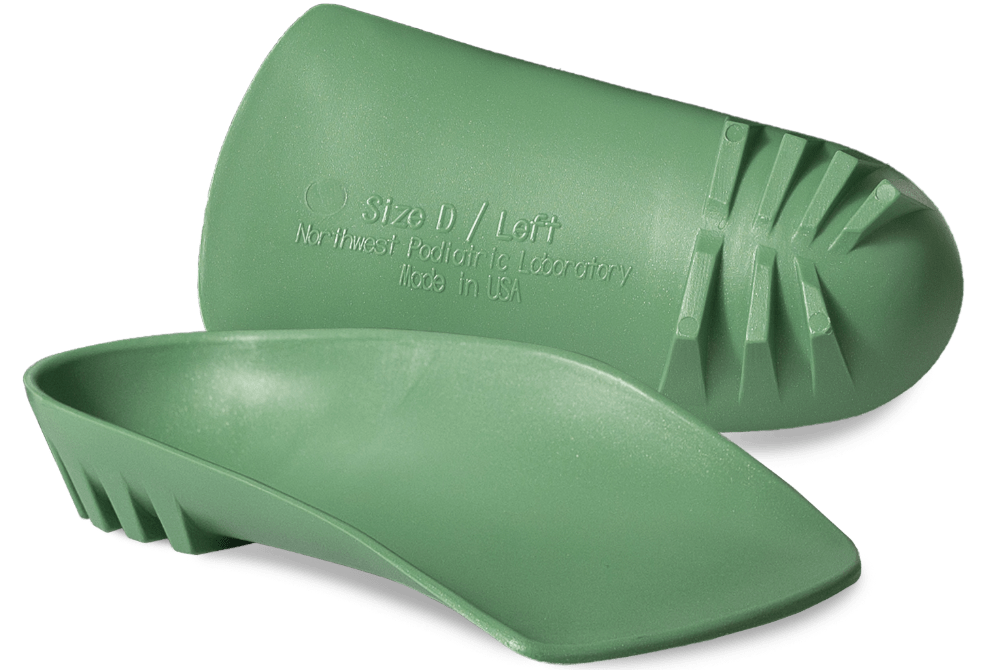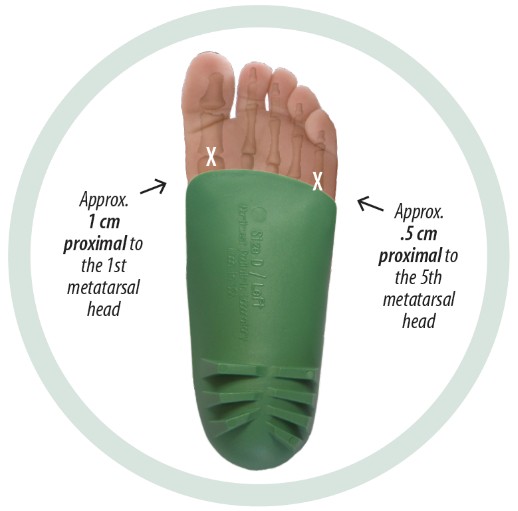Healthy feet. Active children. Happy parents.
Children’s OTC Orthotics are over-the-counter insoles that align and support children’s feet to promote improved posture, balance, and stability.
Since 1964, Northwest Podiatric Laboratory we’ve crafted world class custom foot orthotics for well over a million children and adults. This experience is the foundation of our Children’s OTC Orthotics.
To create an OTC orthotic able to serve even the most active children, we began with our highly regarded custom children’s orthotic and distilled it down to its essential elements:
Many children experience improved function and reduced pain with a well-designed OTC orthotic, although custom orthotics made from a plaster mold, foam impression or 3D scan may be preferred in some cases.
At Northwest Podiatric Laboratory, we’re proud to do our part to keep children health, active, and happy.

Key features
— A deep heel cup and heel post for stability.
— Kid-friendly colors.
— A sleek design for great shoe fit.
— Seven sizes that grow with kids (ages 18 months to approximately 8 years).
— Rigid construction for kid-proof durability.
— Made in USA.
Sizing
— A (Size 6)
— B (Size 7/8)
— C (Size 9/10)
— D (Size 11/12)
— E (Size 13/1)
— F (Size 2)
— G (Size 3)
For the next Northwest OTC option beyond Size G, select Premium or Elite Size 4/5.
(Note: Shoe sizes vary widely by manufacturer and the shape/size of every foot is different. Therefore, a child’s shoe size can only offer a rough approximation of which Children’s OTC Orthotic will provide the proper fit. Practitioners should always use a sizing Set to determine best size before ordering/dispensing.)
How to fit
- Examine the child’s foot. Have the child sit on a chair or exam table and straighten one leg. Examine the child’s foot, roughly gauging the size and shape.
- Locate the metatarsal heads. Locate the 1st and 5th metatarsal heads, marking them if necessary. You’ll use this information in Step #5.
- Determine the approximate orthotic size. Based on your quick visual examination, select two or three orthotics from the sizing set most likely to fit the child.
- Confirm the orthotic-to-heel relationship. Hold one of the orthotics to the child’s foot, being sure the foot and sample are matched (i.e. left foot with left orthotic sample). Ensure the children’s heel fits snugly into the orthotic, as it will when the child is wearing the orthotic in his/her shoe.
- Confirm the orthotic-to-forefoot relationship. The distal (forefoot) end of the orthotic should be about 1cm proximal to the 1st metatarsal head and about .5 cm proximal to the 5th metatarsal head. Try different sizes, if necessary, until this relationship is achieved. When choosing between two sizes, it’s generally preferable to select the large size to allow for growth.
- Dispense the orthotics. Many healthcare professionals find it advantageous to carry an inventory of Children’s OTC Orthotics to provide their patients with immediate foot pain relief. Other healthcare professionals prefer to order as need to eliminate the need to carry inventory.

Insight from Chris Smith, DPM, NWPL’s former Medical Director
Learn more about what makes Northwest Podiatric Laboratory’s Children’s OTC Orthotics unique and effective from NWPL’s former Medical Director, Chris Smith, DPM.
- This orthotic is a generic foot device fabricated from an idealized stable foot.
- This device is not correctional. It only improves the position of the foot to the floor while underfoot. The device will not create an arch. Like eyeglasses, the device only works when it is used.
- For a given foot, a larger shoe may be necessary, but this is generally not the case. The device is surprisingly comfortable with high patient tolerance (efficacy).
- The Midtarsal Joint is placed in its functional locked position, making the foot function as a rigid lever (as opposed to a flexible flat foot).
- The deep heel cup and high flanges control (hold) the foot in a more upright, stable position as opposed to flexible flat foot position.
- Stability in stance, walking and running are improved, sometimes dramatically. Less tripping and falling are to be expected.
- The length of stride increases meaning that the user walks faster.
- This device is intended primarily for the flat foot. If the foot is coincidentally symptomatic, most or all pain will resolve but the foot should be monitored by a healthcare professional.
- The devices are color coded for size and each size will be appropriate for approximately one year.
Ready to step up to Children’s OTC Orthotics?
Contact our knowledgeable Customer Care Team at [email protected] or 800-443-7260.
Northwest Podiatric Laboratory is only able to work under the direction of a licensed healthcare professional and is unable to work directly with patients. Specific questions or concerns should be directed to a healthcare professional.
Northwest Podiatric Laboratory is the leader in the design and manufacture of premium custom foot orthotics. Located off the beaten path in the far northwest corner of Washington State, we’ve always been a little outside the mainstream with obsessively high standards and outside-the-box thinking. Dennis Brown, a retired British soldier, elite athlete, and natural-born inventor founded the company in 1964 and was joined by a pioneer in the biomechanics of the foot, Dr. Chris Smith, in 1974. With an exclusive blend of science, craftsmanship and innovation, we produce orthotics with a unique shape and unparalleled performance. Northwest Podiatric Laboratory has helped over a million people suffering from foot pain to lead better, pain-free lives. Learn more at www.nwpodiatric.com